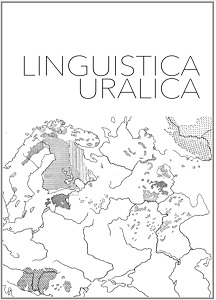Analysis of Karelian Dialect Division Based on Algorithmic Clustering
Analysis of Karelian Dialect Division Based on Algorithmic Clustering
Author(s): Irina Petrovna Novak, Martti PenttonenSubject(s): Sociolinguistics, Finno-Ugrian studies
Published by: Teaduste Akadeemia Kirjastus
Keywords: Karelian language; dialect division; algorithmic clustering;
Summary/Abstract: The article presents an algorithm for clustering dialects by similarity of data in the dialect atlas of the Karelian language (Бубрих, Беляков, Пунжина 1997). By repeating the procedure we get a hierarchy of dialects. Cluster hierarchies can be based on all maps of the Atlas, or on any subset of maps, e.g. morphology, noun inflection, or vocabulary maps. As an example, we consider clusters based on sibilants, local cases, and all maps of the Atlas. An analysis of the clusters, with reference to linguistic literature, leads to the following conclusions: Karelian dialects can be divided into two main areas, Karelian Proper and Livvi-Ludic areas. Border Karelian dialects, which are relatively similar to each other, seem more like Livvi Karelian than Karelian Proper. On the other hand, the traditional volost based division of Karelian dialects turns out to be too fine-grained to reveal any significant differences.
Journal: Linguistica Uralica
- Issue Year: LVII/2021
- Issue No: 2
- Page Range: 81-101
- Page Count: 21
- Language: English

